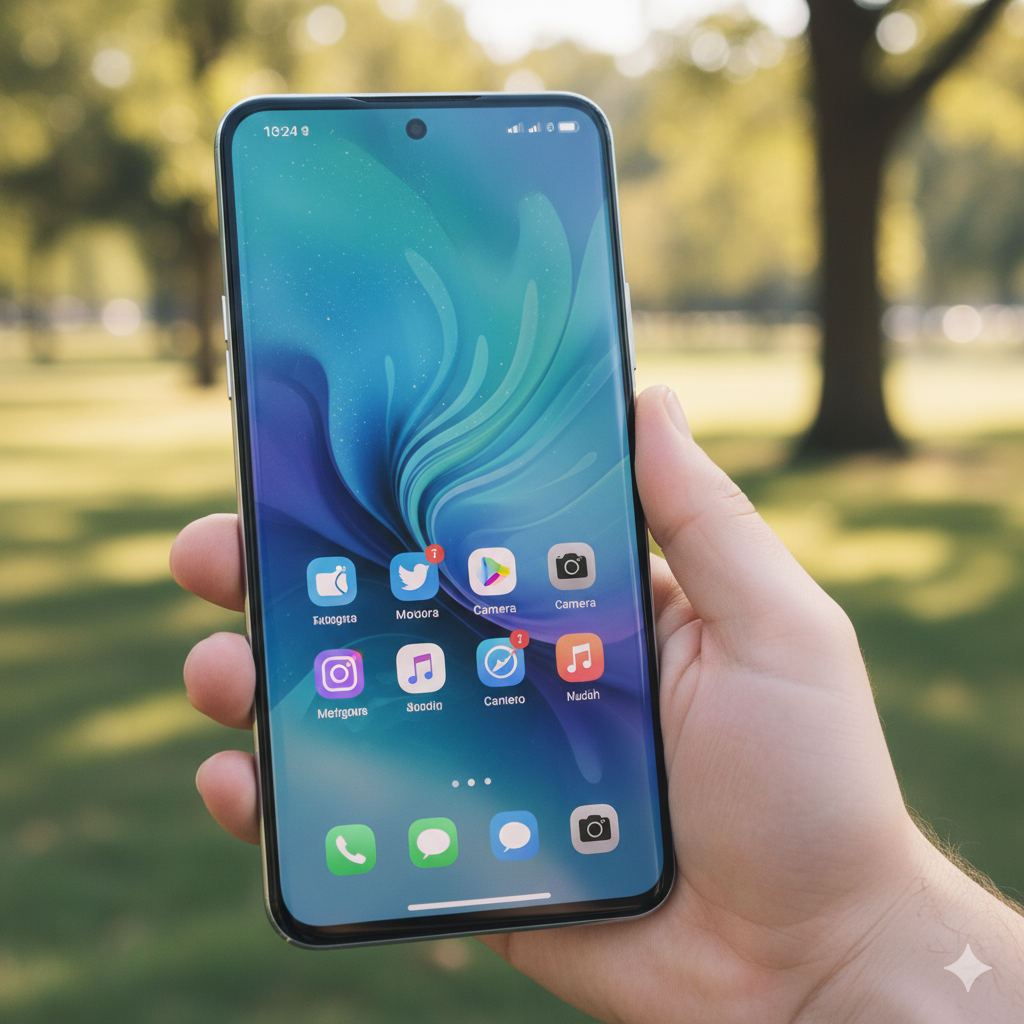In today’s hyper-connected world, our smartphones are more than just communication devices. They are our navigators, cameras, entertainment centers, and mobile offices. With flagship models from brands like Apple and Samsung now easily surpassing the $1,000 mark, these pocket-sized computers represent a significant financial investment. This raises a crucial question for every smartphone owner: Is cell phone insurance a savvy financial move or an unnecessary expense?
The answer isn’t a simple yes or no. It depends on a variety of factors, including the cost of your phone, your personal habits, and your tolerance for financial risk. A cracked screen, a stolen device, or accidental water damage can lead to hundreds of dollars in repair or replacement costs. Insurance promises to soften that blow, but it comes with its own set of costs—monthly premiums and deductibles.
This comprehensive guide will demystify the world of cell phone insurance. We will break down exactly what it covers, explore the different providers, conduct a thorough cost-benefit analysis, and examine the alternatives. By the end, you’ll have all the information you need to decide if insuring your smartphone is the right choice for your wallet and your peace of mind.
What Does Cell Phone Insurance Actually Cover (and What Does It Exclude)?

Before you can decide if it’s worth the cost, you need a clear understanding of what you’re paying for. Cell phone insurance is designed to protect you from specific perils that can damage or deprive you of your device. While policies vary between providers, most comprehensive plans offer a safety net against the most common mishaps.
The Core Protections: Damage, Theft, and Loss
A robust cell phone insurance plan typically covers three main categories of incidents:
- Accidental Damage (including liquid damage): This is the most common type of claim. It covers drops that result in cracked screens or shattered back glass, as well as spills and full submersion in water that can fry the internal electronics. If your phone takes an unexpected tumble onto the pavement or a dip in the pool, this is the coverage that comes to the rescue.
- Theft: This protects you if your phone is stolen. Whether it’s snatched from your hand, taken in a burglary, or lifted by a pickpocket, theft coverage allows you to get a replacement device. A police report is almost always required to file a theft claim.
- Loss: This is often considered premium coverage and isn’t included in all basic plans. Loss protection covers you if you simply misplace your phone and cannot find it. If you accidentally leave it in a taxi or it falls out of your pocket during a hike, this is the coverage you would need.
It’s crucial to note that many basic insurance plans sold at the point of purchase only cover damage and may exclude theft and loss entirely. Always read the fine print to know exactly what perils you are protected against.
Understanding the Exclusions: What Your Policy Won’t Cover
Just as important as what’s covered is what’s not covered. Insurance policies have specific exclusions to prevent fraud and limit liability. Common exclusions include:
- Intentional Damage: You cannot purposely break your phone and expect a payout.
- Cosmetic Damage: Minor scratches, scuffs, and dents that don’t impact the phone’s functionality are typically not covered.
- Software Issues: Problems like viruses, glitches, or software malfunctions are not covered by insurance. These fall under the category of technical support.
- Normal Wear and Tear: The gradual degradation of your phone’s performance or battery life over time is not an insurable event.
- Accessories: Lost or damaged chargers, cases, and headphones are generally not included in the phone’s insurance policy.
The Real Cost of Protection: Deconstructing Premiums and Deductibles
The true cost of cell phone insurance isn’t just the monthly fee. To accurately assess its value, you must consider both the premium and the deductible.
- Premium: This is the fixed monthly or annual fee you pay to keep the insurance policy active. For high-end smartphones, premiums typically range from $8 to $20 per month.
- Deductible (or Service Fee): This is the out-of-pocket amount you must pay when you file a claim before the insurance company will repair or replace your device. Deductibles are tiered based on the type of claim and the device model. For example, a screen repair might have a $29 deductible, while replacing a stolen top-tier smartphone could have a deductible of $250 or more.
The crucial mistake many people make is ignoring the deductible. If your insurance costs $15 per month ($180 per year) and has a $200 deductible for a replacement, a single claim in a year will cost you a total of $380. This calculation is essential when weighing the cost of insurance against the potential cost of a repair or replacement.
Who Sells Cell Phone Insurance? Your Main Options Explored

When you decide to insure your phone, you generally have three avenues to choose from: your wireless carrier, the phone’s manufacturer, or a third-party insurance company.
Coverage Through Your Wireless Carrier (AT&T, Verizon, T-Mobile)
This is the most common and convenient option. Carriers like AT&T, Verizon, and T-Mobile offer insurance plans (e.g., AT&T Protect Advantage, Verizon Mobile Protect) that you can sign up for when you purchase your phone.
- Pros: Easy to enroll, monthly premium is conveniently added to your phone bill, and they often offer comprehensive coverage including loss and theft. The claims process can be streamlined, sometimes with same-day screen repairs or next-day replacement shipping.
- Cons: These plans are often the most expensive. Deductibles for premium devices can be high, and replacement devices may be refurbished rather than brand new.
Protection Plans from the Manufacturer (AppleCare+, Samsung Care+)
Device manufacturers offer their own branded protection plans, which are essentially a combination of an extended warranty and an insurance policy.
- AppleCare+ with Theft and Loss: This is Apple’s premium offering for iPhone users. It extends the standard warranty to two years and provides coverage for up to two incidents of accidental damage, theft, or loss every 12 months.
- Samsung Care+: Samsung’s program is very similar, offering protection against accidental damage, breakdowns, and, with higher tiers, theft and loss.
- Pros: You are dealing directly with the company that made your device. Repairs are done by certified technicians using genuine parts, which can be a major advantage. Deductibles for screen repairs are often very low (e.g., $29 for an iPhone).
- Cons: You must typically purchase the plan at the time of device purchase or within a short window afterward (e.g., 60 days for Apple). The upfront cost can be higher if you choose to pay in full rather than monthly.
Insurance from Third-Party Companies (SquareTrade, Worth Ave. Group)
A number of independent companies specialize in electronics insurance and often provide a compelling alternative to carrier and manufacturer plans.
- Pros: These plans can be significantly cheaper, with lower monthly premiums and competitive deductibles. They often have more flexible enrollment periods, allowing you to insure a phone you’ve owned for a while.
- Cons: The claims process might be less integrated. You may have to take your device to a designated repair shop or mail it in, which can take longer. It’s also vital to research the company’s reputation and read customer reviews before signing up.
The Alternatives: Are There Other Ways to Protect Your Phone?

Insurance isn’t the only solution. Before committing to a monthly premium, consider these powerful alternatives that might already be available to you.
Your Credit Card Might Already Have You Covered
This is one of the most overlooked perks of premium credit cards. Many cards from issuers like American Express, Chase, and Wells Fargo offer complimentary cell phone protection as a cardholder benefit. To qualify, you must pay your monthly cell phone bill with that specific credit card. The coverage is typically secondary, meaning it kicks in after any other insurance, but it can be a primary source of protection if you have no other policy. Coverage usually includes damage and theft (but rarely loss), with a modest deductible (e.g., $25 to $50). This can be a fantastic, cost-free alternative to a paid insurance plan.
The “Self-Insurance” Method: Building an Emergency Fund
“Self-insuring” is the practice of saving money specifically for unexpected expenses instead of paying an insurance company. Instead of paying a $15 monthly premium, you could deposit that same amount into a dedicated high-yield savings account. After two years, you would have saved $360. This fund can be used to pay for a screen repair or put toward a new phone if needed. If you never have an incident, the money is yours to keep. This strategy is best for people who are generally careful with their devices and have the financial discipline to not dip into the fund for other purposes.
Manufacturer’s Warranty vs. Insurance: Knowing the Difference
It is critical not to confuse a manufacturer’s warranty with insurance. A standard one-year warranty that comes with a new phone only covers mechanical defects and hardware failures that are the manufacturer’s fault. It offers zero protection against accidental drops, water damage, theft, or loss. An extended warranty simply prolongs this protection against defects but still does not cover accidents. Insurance is what protects you from, well, yourself and the world around you.
The Final Verdict: Who Should Seriously Consider Cell Phone Insurance?

After weighing the costs, coverages, and alternatives, the decision comes down to your personal circumstances. Cell phone insurance is likely a good idea for you if:
- You Own a High-End, Expensive Smartphone: The higher the replacement cost, the more valuable insurance becomes. Insuring a $1,200 phone makes more financial sense than insuring a $300 budget device.
- You Have a History of Damaging or Losing Phones: Be honest with yourself. If you are prone to accidents, insurance can save you from repeated, costly repairs.
- You Cannot Afford an Unexpected, Large Expense: If paying $600+ out-of-pocket to replace your phone would be a major financial hardship, the predictable monthly cost of insurance provides valuable budget stability.
- You Have Young Children or Teenagers on Your Plan: Kids are notoriously hard on electronics. Insuring their devices can be a very wise investment.
Conversely, you might be better off skipping the insurance if:
- You are Using a Mid-Range or Older Phone: If your phone’s replacement cost is less than the annual cost of insurance plus the deductible, it’s not worth it.
- You are Very Careful and Have a Low-Risk Lifestyle: If you work in a quiet office and always use a sturdy case and screen protector, your risk is much lower.
- You Have a Robust Emergency Fund: If you can comfortably cover the cost of a replacement phone without derailing your finances, you can afford to “self-insure.”
- Your Credit Card Already Provides Sufficient Protection: Why pay for something you’re already getting for free?
Ultimately, cell phone insurance is a trade-off. You are paying a guaranteed small amount (the premium) to protect yourself from a potentially large, unexpected expense. By carefully evaluating your own risk, the value of your device, and the available alternatives, you can make an informed decision that aligns perfectly with your financial strategy.







